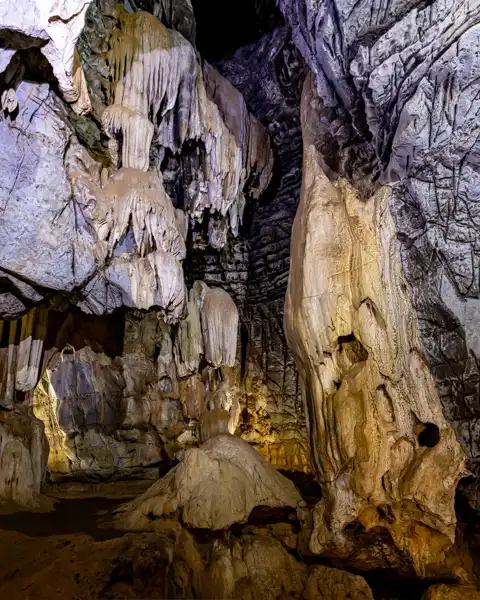
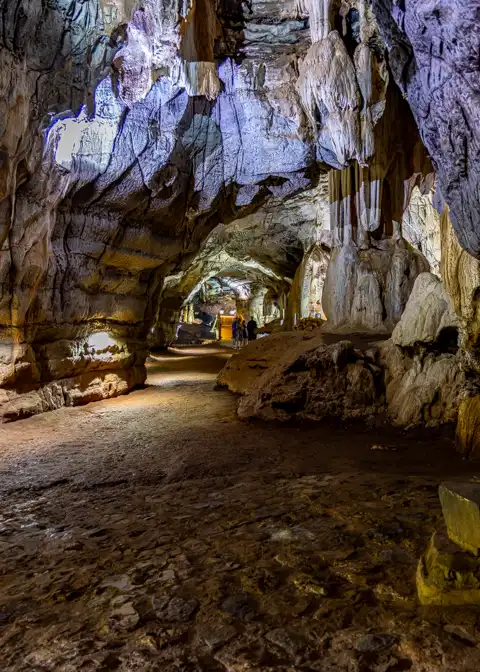
The Sudwala Caves, carved into ancient Precambrian dolomite rock, are the oldest known caves in the world. Formed around 240 million years ago, these caves offer a rare glimpse into Earth’s geological history. Situated in a region that was once part of Gondwana, the rock layers here date back 2800 million years.

The cave system is easily navigable, well-lit, and maintains a constant temperature of 17°C. Guided tours, led by knowledgeable experts, take visitors 600 meters into the cave and 150 meters underground. The tour, lasting approximately 60 minutes, unveils breathtaking natural sculptures and formations that have been millions of years in the making.
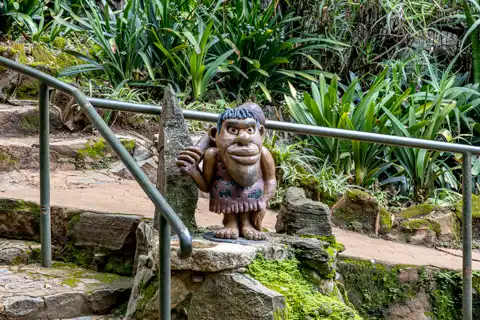
The Sudwala Caves are home to some of the most awe-inspiring natural formations, sculpted over millions of years by geological forces. Visitors can witness towering stalactites, intricate stalagmites, and mesmerizing flowstone structures, each telling a unique story of time and transformation. These remarkable formations provide a glimpse into the Earth's ancient past, showcasing nature’s ability to craft breathtaking subterranean landscapes.
H. Jackson did a survey of the cave in 1969 and created a detailed map of the system, which has served as a foundational reference for subsequent studies and publications.
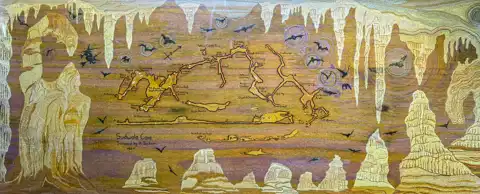
Below is a visual and introduction to some of the fascinating rock formations, natural sculptures, and geological features you can expect to encounter during your tour.
One of the most striking features of the caves, the Lowveld Rocket, stands an impressive 14 meters tall and 2.5 meters wide. This monumental structure was formed by the gradual union of a stalactite and a stalagmite over 150 million years. Despite its age, the Lowveld Rocket continues to grow, though at a slow pace of just 2.5 centimeters per century, making it a living testament to nature’s enduring artistry.
In stark contrast to the ancient formations, "The Baby" is a relatively young stalactite at just 300 years old. Though small in size, it represents the ongoing evolution within the caves, a reminder that these underground wonders are still actively forming. The Baby serves as a fascinating glimpse into the ceaseless natural processes shaping the cave system.
Somcuba’s Gong is a porous flowstone formation with a distinctive hollow sound when struck, producing reverberations that can travel at speeds of up to 1500 meters per second. Historically, the Swazi people utilized this natural instrument as an alarm system, showcasing the caves’ role not just as a geological wonder but also as a part of human history and ingenuity.
For nearly 40 million years, the Three Praying Nuns have stood in solemn stillness. This striking stalagmite formation resembles three figures in deep contemplation, their natural curves and contours creating an astonishing resemblance to robed nuns engaged in silent prayer. This formation has captivated visitors for generations, sparking interpretations of reverence and mystery.
With an estimated age of 180 million years, the Screaming Monster is one of the most dramatic formations within the caves. Comprising stalactites, stalagmites, and flowstone, it forms a jagged, open-mouthed silhouette that many believe resembles a creature in a perpetual scream. Still growing, the mineral-rich waters continue shaping this eerie yet fascinating feature, making it an ever-evolving spectacle.
One of the more whimsical formations in the Sudwala Caves, the Magnum Ice-Cream, draws attention with its remarkable resemblance to a chocolate-coated ice cream bar. The presence of manganese gives it a distinct dark hue, enhancing its striking similarity. This amusing natural sculpture is a reminder of the unexpected and playful artistry that nature can create.
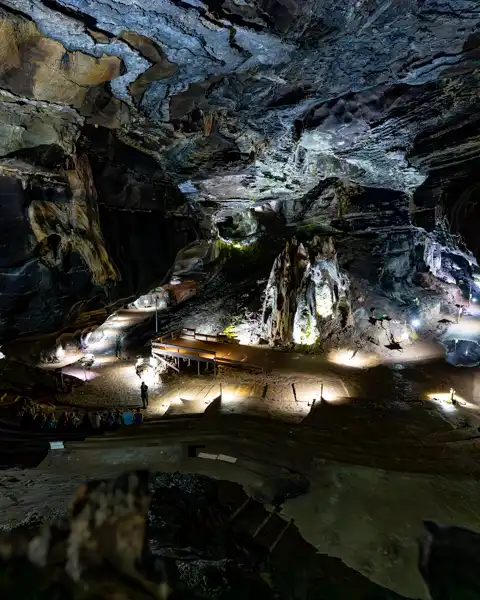
The PR Owen Hall, commonly referred to as the Amphitheatre, is the largest dolomite chamber in the Southern Hemisphere—standing 37 meters tall with a 70-meter diameter. Located inside the Sudwala Caves, this impressive space is named after PR Owen, who played a key role in making the caves accessible to the public in the 1960s.
Its most remarkable feature is the natural acoustics. The dolomite walls absorb sound completely, preventing echoes and allowing for clear, undistorted audio—ideal for live music, theatre, and spoken word. Over the years, the Amphitheatre has been used for a variety of performances and events, from classical concerts and cultural shows to yoga sessions and underground dining.
With dramatic rock formations overhead and a cool, consistent underground climate, the PR Owen Hall offers an unforgettable experience for both performers and audiences.
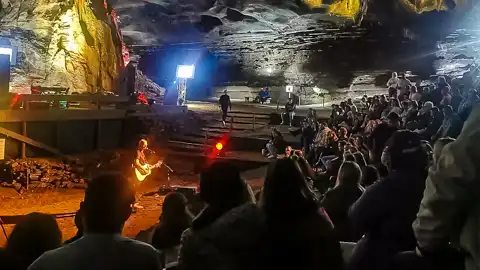

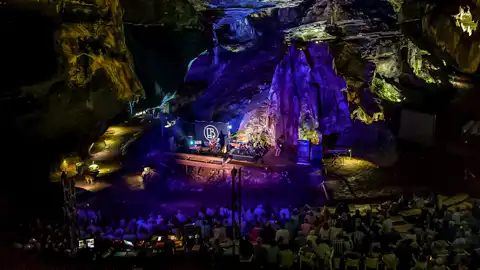
The Sudwala Caves hold a history that stretches back millions of years, serving as both a geological wonder and a site of human occupation. From the early ancestors of humankind to the Swazi people, these caves have been a place of survival, adaptation, and cultural significance.
The Sudwala Caves have a rich history of human activity, dating back to early ancestors like Homo Habilis, who lived in the caves as long as 1.8 million years ago. Artifacts such as stone tools found in the caves show that this site served as a shelter for early humans.
The Swazi people also used the caves as a refuge in the mid-1800s. Tools like grinding stones and torches made from Baboon-Tail Bush Trees were essential for daily life, with the wetting stone used to sharpen spears and axes, and the grinding stones employed to prepare food.
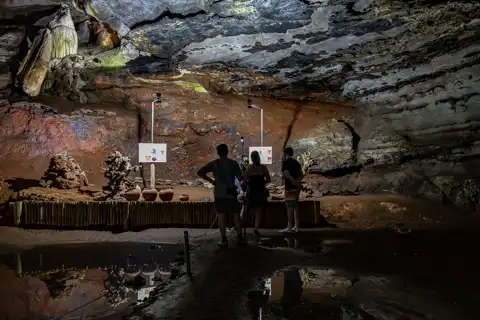
Standing for 185 million years, Samson’s Pillar is the oldest known stalagmite in the caves, a testament to the passage of time. Nearby, the Devil’s Chimney marks the origin of the cave system, where water first carved its way through the rock, beginning the formation process.
This delicate flowstone formation lies 80 meters underground, fed by a natural spring above. The fast-moving water prevents mineral build-up, gradually wearing the structure away. Once a vital water source for the Swazi people, it was believed that drinking from the cave could keep aging at bay.
Stromatolites are ancient fossils of Earth's earliest oxygen-producing organisms. Formed around 2.5 billion years ago in the lowveld, these primitive lifeforms played a key role in shaping our atmosphere. Without them, complex life as we know it may never have existed. Their legacy continues deep within the rock.
